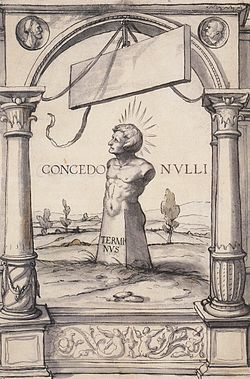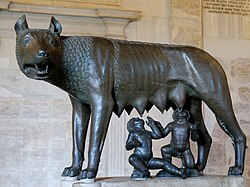Design for a Stained Glass Window with Terminus, by Hans Holbein the Younger.jpg
Design for a Stained Glass Window with Terminus. Pen and ink and brush, grey wash, watercolour, over preliminary chalk drawing,
31.5 × 25 cm,
Kunstmuseum Basel.
Holbein designed the window for the scholar and theologian
Desiderius Erasmus of Rotterdam, who lived in Basel at around the same time as the artist and commissioned portraits and other works from him. Erasmus gave the window itself to the university in Basel, where it was recorded in the 18th century as still in place. Often pictured as a bust on a boundary stone,
Terminus was the Roman god of boundaries, endings, and death, whom Erasmus adopted as his emblem. Included in Holbein's design is Erasmus's motto
concedo nulli (I concede to no one), taken from the myth of Terminus, who refused to concede his place on the Capitoline Hill to Jupiter. Holbein later incorporated the Terminus motif in
a memorial woodcut after Erasmus's death (Müller, 342).

 Den här artikeln är helt eller delvis baserad på material från Nordisk familjebok, Terminus, 1904–1926.
Den här artikeln är helt eller delvis baserad på material från Nordisk familjebok, Terminus, 1904–1926.


